Blue onion - when describing this plant, first of all it is noted that this is one of the most beautiful types of onions used in ornamental gardening. It is valued not for the size of the inflorescences (they are small even at the time of flowering - only about 4 cm), but for their blue color, which changes to lilac towards the end of flowering.
What flowers are best to grow blue onions with?
Blue onions bloom in late spring - early summer for 20-25 days. The leaves begin to die off already at the time of flowering, but by autumn new ones grow. The fact that the leaves quickly die off is good for the neighbors: having shown off, it leaves “the stage”, giving way to other plants. Although even during the growing season the leaves do not draw attention to themselves: they are not very long (three times shorter than the peduncle) and their width is a centimeter.
Blue onion goes well with the yellow flowers of common loosestrife and doronicum, which bloom at the same time. It is also harmonious when planted with other plants of a natural style: bells, scabioses, etc. Blue spherical inflorescences, towering above other plants, create an openwork vertical accent in the flower garden. Try to grow it with yellow and white flowers, this combination will add sophistication and unique charm to your flower garden.
How does it reproduce
Reproduction is vegetative (by daughter bulbs, and some varieties by bulbs) and seeds. Bulbs and bulblets are planted in August-September. The planting depth is three times the diameter of the bulb: the larger the planting material, the deeper it is planted.
If there are several bulbs, they are planted 10 cm apart. Seeds, if there are enough of them, can be sown before winter, given that blue onions readily reproduce by self-sowing. If there are few seeds, it is better to sow them in the spring immediately in separate cups in order to cause less damage to the plants when transplanted to a permanent place.
Where to plant and how to grow
Feels good in sunny flower beds on moderately moist humus soil. Water evenly throughout the season. Does not require shelter for the winter.Once every 5-6 years, when many daughter bulbs form around the planted bulb, the nest is replanted (“in crowded conditions” it begins to bloom worse). It is better to do this after the leaves dry out in the summer and new ones have not yet begun to grow.
By the way, blue onion leaves are quite edible until they become coarse and begin to turn yellow.
Garden types of onions are also decorative, for example, the well-known chives or chives. During flowering, low curtains, consisting of many plants aligned in height, are richly decorated with lilac balls.
Of course, it’s a pity to cut such beauty for salads and okroshka. But in the spring, as a rule, there are enough vitamins in the beds even without chives. And by autumn, if you cut off the yellowed leaves in the summer, young greenery will grow back. So it turns out that chives, having played the role of a flower at the beginning of the season, are reclassified as a green crop in the fall.
Although any onion can transform like this, even onions, if plant bulbs for seeds. Large white heads will decorate any flower garden. Moreover, surrounded by flowering plants, it has a greater chance of not being detected by the onion fly.
Other decorative varieties
If we return to purely decorative varieties, then among them you can select species that will differ from each other in height, size and color of inflorescences, and flowering times.
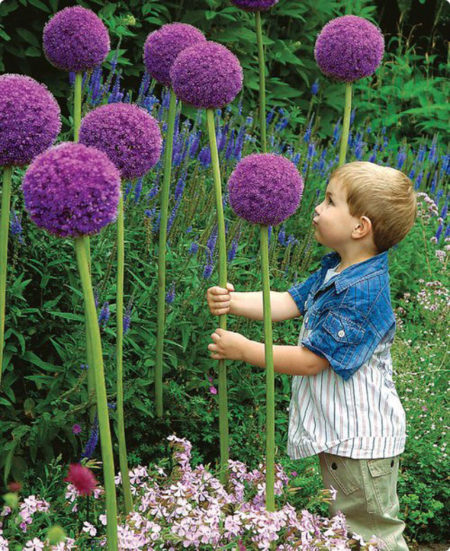
Giant allium
The giant allium will not be lost even in the largest garden: its purple inflorescences-heads are crowned with one and a half meter peduncles.
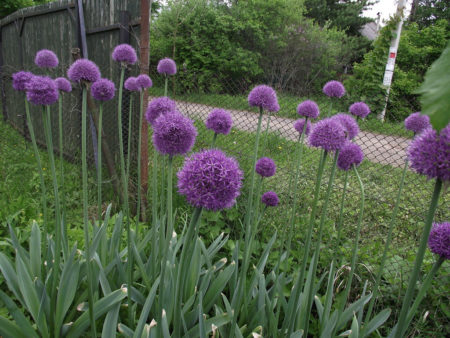
Aflatun onion
Aflatun onion is also a tall one. Blooms in summer with purple spherical inflorescences. There are also pink varieties.
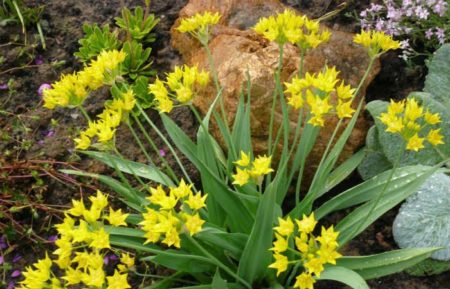
Yellow Molly Onion
Do you like warm colors? Then on your site there will be a place for yellow onion - a low plant (30-40 cm) with yellow bell-shaped flowers, collected in umbrella inflorescences.
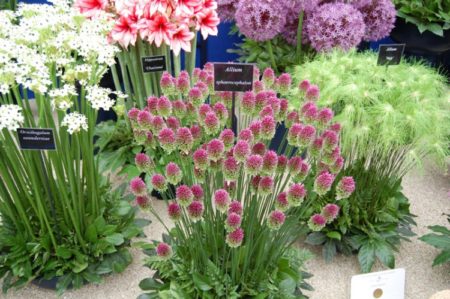
Round-headed or ball-headed onion
Want to add more variety to your late summer blooms? Plant round onions. Its dark purple ovoid inflorescences go well with echinacea, heleniums, and solidago.
Dried onion blossoms are great for winter flower arrangements.
You can grow several types of these ornamental plants in your garden, which will bloom from spring until the end of summer. In addition, onion inflorescences remain decorative even with ripened seeds. If you are not afraid of self-seeding, you can leave them uncut for a long time.
Continuation of the topic:
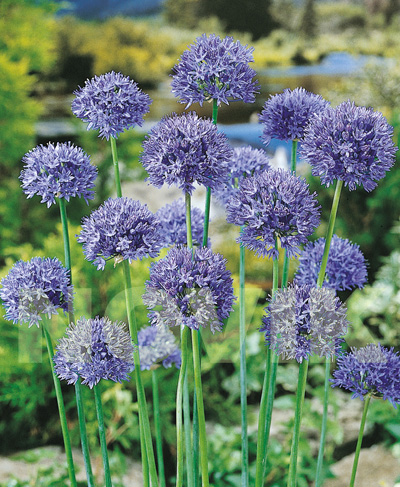
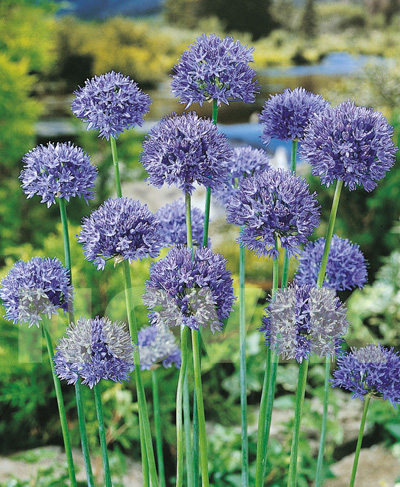
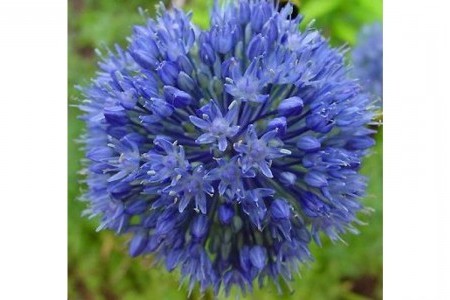
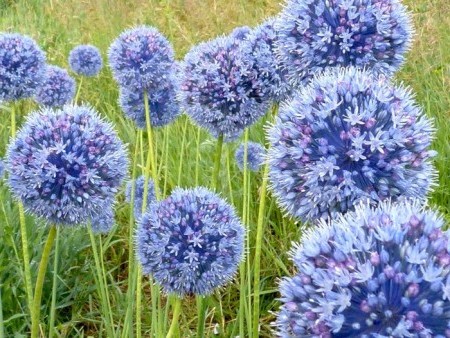

 (4 ratings, average: 4,50 out of 5)
(4 ratings, average: 4,50 out of 5) CUCUMBERS NEVER GET SICK, I'VE BEEN USING ONLY THIS FOR 40 YEARS! I SHARE A SECRET WITH YOU, CUCUMBERS ARE LIKE THE PICTURE!
CUCUMBERS NEVER GET SICK, I'VE BEEN USING ONLY THIS FOR 40 YEARS! I SHARE A SECRET WITH YOU, CUCUMBERS ARE LIKE THE PICTURE! You can dig a bucket of potatoes from each bush. Do you think these are fairy tales? Watch the video
You can dig a bucket of potatoes from each bush. Do you think these are fairy tales? Watch the video
 How our fellow gardeners work in Korea. There is a lot to learn and just fun to watch.
How our fellow gardeners work in Korea. There is a lot to learn and just fun to watch. Eye trainer.The author claims that with daily viewing, vision is restored. They don't charge money for views.
Eye trainer.The author claims that with daily viewing, vision is restored. They don't charge money for views. A 3-ingredient cake recipe in 30 minutes is better than Napoleon. Simple and very tasty.
A 3-ingredient cake recipe in 30 minutes is better than Napoleon. Simple and very tasty. Therapeutic exercises for cervical osteochondrosis. A complete set of exercises.
Therapeutic exercises for cervical osteochondrosis. A complete set of exercises. Which indoor plants match your zodiac sign?
Which indoor plants match your zodiac sign? What about them? Excursion to German dachas.
What about them? Excursion to German dachas.